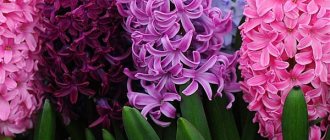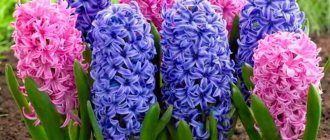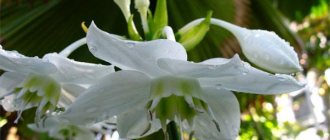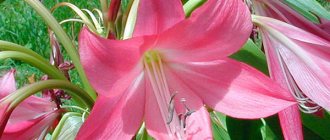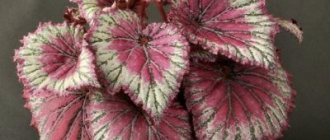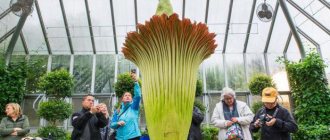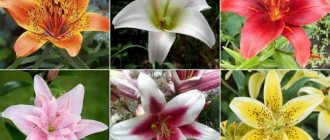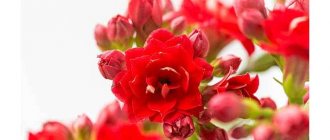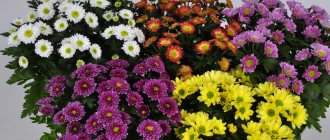How to choose hyacinth in a pot in a store
In early spring, stores begin to sell blooming hyacinths of various colors. If you decide to purchase a plant more than once, you need to choose the right hyacinth in a pot so that further forcing will be successful.
- Pay attention to the stem and peduncle, they should be erect.
- The plant bulb should be quite large - more than 5 cm in diameter.
- Look for any cracks, dents or pest damage on the bulb.
Feel free to take it if the plant looks healthy, with a dense bulb and bright leaves.
Possible problems when growing potted hyacinth
Caring for hyacinth in a pot at home cannot be called too difficult, but sometimes problems cannot be avoided.
- Hyacinth does not bloom - violation of the temperature regime during storage, too short a cooling period, use of an inappropriate (depleted, immature) bulb.
- The peduncle is too long - the plant was in hot conditions during the growth period.
- A short peduncle means a short cooling period, a diseased or depleted bulb.
- The buds do not open - uneven watering.
- Deformed flowers - the temperature during the cooling period was above 9°C.
- The leaves deviate from the center, curl and become lighter - the plant does not have enough light, it needs additional lighting or a change of location.
- Growth has stopped - the pot is too wide, the bulb is planted deep. Hyacinth must be replanted taking into account the growing technology.
- Deformation of the peduncle - drafts or one-sided light.
- Buds don't open
- Rotting of the bulb or inflorescences - overwatering. Watering is reduced, the bulb is dusted with wood ash.
- Spotty leaf damage is caused by aphids. The plant is sprayed with a soap solution.
Hyacinths are valued for their decorative appearance and persistent aroma. When they fade, the bulbs are allowed to rest and planted again. With good care, the plant will bloom every spring for several years.
What to do with hyacinth after purchase
Flower growers disagree on whether it is worth replanting a blooming hyacinth just bought at the store.
Plants are sold in cramped pots, in which there is too little space for the bulb, not enough nutrient substrate, and the soil dries out too quickly. Therefore, if you see the need to replant a plant, you can carefully do it. To do this, thoroughly moisten the soil in which the plant is located and carefully transfer the bulb into a larger pot. Cover with soil, but do not bury the neck of the bulb.
After transplanting into a larger container, the plant not only looks better, but also becomes easier to care for. After flowering, it can be grown in the same pot.
How to force a flower in water?
The peculiarity of this flower is the possibility of obtaining a full-fledged flower in the complete absence of soil. The distillation can be done in water, filling the bulb halfway. The entire procedure for preparing to obtain a flower is carried out in the same way as in the case with soil.
At the end of the cooling period, the bulbs are placed in a warm place , but continue to protect them from light. As soon as the sprouts reach a length of 10 centimeters, the bulbs are exposed to light. Add mineral fertilizers to the water, this will speed up the process of forcing the flower.
IMPORTANT! The bulb should be placed in water so that it only touches the water with its roots, the rest of it should be on the surface.
The process of planting and transplanting hyacinth indoors into a pot requires strict adherence to the rules, as well as knowledge of how to care for them. Only in this case can you get a beautiful, bright flower at the right time.
Flower care requirements
To obtain bright hyacinth flowers, it is necessary to take into account various features in its care.
Temperature and lighting
Hyacinth prefers bright, diffused light for at least 12 hours a day. Windows facing south and southeast are perfect for it. If the lighting is insufficient, the plant can be artificially illuminated. And so that the plant develops evenly and does not stretch one side towards the light, the pot with the bulb must be rotated regularly.
Comfortable temperature for hyacinth is 20–22 degrees. It should also be taken into account that sudden temperature changes, drafts and hot heating devices have a negative impact on the plant and can destroy it.
Watering and humidity at home
Hyacinth is a moisture-loving plant. Therefore, it is important to always keep the soil in the pot slightly moist. But the water should not stagnate, otherwise the plant may rot.
Watering is carried out with soft water, standing for 24 hours, at room temperature. When watering, it is important not to wet the bulb, leaf axils and buds. It is worth watering along the edge of the container, and if the pot is small, then you can water it in the pan.
Do not spray the plant, especially during flowering.
Soil and fertilizing
In specialized stores you can purchase a mixture for bulbous plants. To prepare the soil yourself, you need to mix in equal proportions:
- turf land;
- leaf soil;
- compost;
- sand;
- peat.
Perlite or vermiculite can be added to the hyacinth substrate; they retain moisture and promote soil aeration.
Preliminary tillage of the soil will avoid damage to the bulb by pests and reduce the risk of fungal diseases.
The soil in the pot is quickly depleted, so hyacinth needs regular feeding. During the growth period and at the budding stage, the plant is fed 2 times a month with fertilizer to stimulate flowering. Plants are fed from the very beginning of growth until the end of flowering. After the plant has flowered, it is fed with complex fertilizer.
Choosing a pot
A pot made of any material is suitable for hyacinth: plastic, clay, ceramic. The main thing is that it is deep, with a diameter 3–4 cm wider than the bulb. It is imperative to have drainage holes.
You can plant several types of hyacinths in one container, then during flowering you will have a beautiful and lush bouquet.
Hyacinths not blooming?
Sometimes it can happen that a seemingly fully developed peduncle with a mass of buds does not bloom. Taking a closer look, you will find that the buds only at first glance seem to be alive, but they consist of completely dried petals. The reason for this situation is simple - the hyacinths simply did not have enough water. Watering was either rare or too scarce.
The fact is that hyacinths, like any other primroses, bloom in nature in spring, when the earth is saturated with moisture after the melted snow. Humidity is high and it rains often. In city apartments, the situation is the opposite - dry air from central heating and a small container. If you add untimely watering to this, then the hyacinth simply does not have enough moisture to open the buds.
And there is only one way out - strictly monitor the soil moisture during the budding period. At the same time, overflow is also contraindicated for bulbous ones, and the container must have drainage holes for the outflow of excess water. By the way, untimely watering can also lead to hyacinth flowering too quickly.
The appearance of a peduncle and further care of the flowering plant
With proper care, the hyacinth quickly develops a peduncle. As soon as leaves begin to emerge from the bulb, developing buds can be seen.
Now, for good flower development, it is necessary to maintain a temperature of about 20 °C, protect from temperature changes and drafts. Twice a month, fertilize the plant with fertilizers to stimulate flowering and maintain the soil moisture necessary for the plant.
Under what conditions will the plant bloom again in a year?
Plant forcing is done synthetically. In most cases, phytohormones are used, as well as synthetic stimulants that accelerate development. Due to accelerated growth, the hyacinth bulb is greatly depleted, and the supply of elements important for life that need to be replenished quickly occurs.
Most often in retail chains, flowering hyacinths are presented in small containers, in which the plant does not receive sufficient nutrition. In this case, immediately after purchasing in a store, the hyacinth should be transplanted into a larger container. This must be done carefully, by transferring the earthen lump from one container to another, in order to avoid damage to the neck of the onion. If transplanted carelessly, the plant may not bloom again.
The old grower should be removed in a timely manner. This must be done before fruits begin to form in the form of boxes with brown seeds. After cutting the peduncle, a new stage of development and care begins for the hyacinth. Go to the Land of Advice home page for more interesting stories.
Replanting after flowering
If the hyacinth was not transplanted into a new, larger pot immediately after purchase, then this must be done after the plant has flowered.
For transplantation you need:
- prepare the container;
- buy or prepare soil yourself;
- pour expanded clay onto the bottom of the pot and cover it with a layer of soil;
- Place the bulbs at 2/3 of the height, so that they do not touch the walls of the pot.
Important. The neck of the bulb must be above ground level, otherwise the plant may rot and die.
Biological description of hyacinth
The plant belongs to the asparagus family. It grows wild on the Mediterranean coast, in Greece, and Asia Minor.
The bulb consists of so-called lower leaves, the bases of which form the bottom of the bulb. A peduncle grows from the bottom.
The flowers form a raceme in the form of a cylinder or a rounded cylinder at the top of the peduncle. The perianth is painted in a variety of colors. The ends of the flower are gracefully bent upward. They can be terry or simple.
The leaves are large, fleshy, lanceolate, green, with an inconspicuous shine. Depending on the variety, the plant has from 5 to 8 leaves.
The plant is low-growing, no more than 30 cm in height. The flowering part of the peduncle occupies almost ⅔ of the entire stem. It reproduces by children growing near the bottom and by seeds. The seed method is used by breeders to create new varieties and hybrids. Hyacinth reproduces slowly, because... Few children are produced, only 2-3 per year, which bloom only in the third year.
How to save a bulb after flowering
Further care for the bulb is simple; you just need to know a few rules:
- After the plant has flowered, you need to cut off the peduncle, leaving the leaves.
- If the plant is in a small pot, then it should be transferred to a larger container without deepening the neck of the bulb. This way the plant will continue its development and growth of children.
- It is best to keep the plant in a cool, bright place.
- Now you should water the hyacinth less abundantly and after the soil dries out.
- Around mid-May, the leaves will completely dry out and watering should be stopped.
- Next, you need to cut off the dried leaves, pull out the bulb and carefully clean it from the soil, remove dead scales.
- Dry the bulbs for 3 days.
- Store the bulbs in a dark, warm, well-ventilated area, in a cardboard box, paper bag or sawdust for about 2 months.
- A month before planting, the bulbs must be kept in a cool, damp room with a temperature no higher than +5 °C.
The hyacinth flowering phase lasts 2-3 weeks. The flowering period must necessarily be replaced by a dormant period; it is important to ensure a smooth transition between them. This will allow the bulb to rest and gain strength to continue to delight you with bright flowers.
Digging and storing hyacinth bulbs
Next, the bulbs are dug out of the ground and sent for summer storage - for 2.5-3 months.
Work order step by step:
- The bulbs are carefully removed and cleaned from the soil. The roots and loose scales are removed. If there are small onions (babies) on the mother bulb, they are separated and also sent for storage. Afterwards, they are grown for 2-3 years in exhaust gas to an adult size; they are too small for flowering.
- The dug up bulbs are washed and disinfected in a warm, deep pink solution of potassium permanganate or in Maxim for 30-40 minutes.
- After cleaning, the bulbs are dried for 5-7 days in a dark place with good ventilation, at a temperature of 18-20°C. Humidity is average – 45-60%.
- Next, the bulbs are placed in paper bags and stored in a dark place at a temperature of 25-30°C. Exposure time - 1 month.
- Then the storage temperature is reduced to 17-20°C. They are kept in such conditions until planting in the ground - on average, until mid-October.
Hyacinth bulbs are stored in paper bags, wrapped in newspaper, in cardboard boxes or boxes.
Please note!
Planting material is not stored in the refrigerator or in plastic bags.
Answers to frequently asked questions
What to do with the flower after flowering?
Lush flowering of hyacinth takes a lot of energy from the bulb. In order for the plant to please you again with beautiful flowers and a wonderful aroma in a year, you need to give it a rest.
After flowering you need:
- cut off the peduncle;
- reduce watering;
- feed with complex fertilizer;
- wait for the leaves to dry, remove the bulb from the pot, clean it from the soil;
- dry the onion;
- put in a cool place.
In the fall, when the hyacinth bulb has rested, it is planted in open ground. The plant may not bloom in the spring, but this will prepare it for forcing next season.
Bulb requirements for healthy growth
A high-quality bulb is the key to beautiful flowering. When purchasing a potted hyacinth, carefully inspect the plant. The stem and peduncle should stand straight, without tilting, the leaves also look up.
For forcing in a pot, the bulb must meet certain requirements:
- choose a large onion with a diameter of more than 5 cm;
- the bulb should be elastic with clear scales;
- Make sure there is no damage or mold.
Experienced flower growers recommend purchasing hyacinth bulbs in trusted places and specialized stores.
Is it possible to adjust flowering to a certain moment?
Many gardeners also love hyacinth because it can be made to bloom at a certain time.
To determine the start date of forcing, it is necessary to count 3-3.5 months from the date on which flowering should occur.
During this time you need:
- place the bulb from a warm, dry place for 2–3 weeks in a dry but cool place, 5–10 °C;
- then the bulbs are planted in a pot, watered and left for 40–45 days in a cool, dark place;
- then placed for 10 days in a warmer - 15 ° C, but dark place.
At the end of forcing, the bulbs are transferred to normal conditions (on the windowsill). Over the course of a month, they will form a flower arrow with a bud.
If you need to get hyacinth to bloom by March 8, forcing should begin no later than mid-November.
When can you separate children?
After the faded bulbs have been removed from the pot, cleaned of dry leaves and soil, the children can be separated from them. If the children are firmly attached to the mother plant, they will easily detach before autumn planting, when the bulbs dry out.
Why does Hyacinth have a short peduncle and leaves fall out of the bulb?
There may be several reasons for this:
- non-compliance with temperature conditions during rest;
- insufficient watering;
- lack of fertilizing or irregularity of its implementation;
- aging of the bulb.
Is it possible to keep hyacinths in the bedroom?
If there is enough light in the room for this plant, and its rich aroma does not cause unpleasant sensations to the people who relax there, then there are no contraindications to placing hyacinth in the bedroom.
Some even believe that hyacinth charges people with good energy and has a beneficial effect on family relationships.
Is it possible to replant blooming hyacinth?
It is not recommended to replant hyacinth in open soil or another pot during the flowering phase. But it is not prohibited, because situations are different. Only this process should be carried out extremely carefully, using the transshipment method.
You should carefully and carefully, without damaging the roots, transfer the flower from one pot to another, or plant it in open ground using the previously described method. But keep in mind that violating the integrity of the root system in the area where a flowering hyacinth is transplanted will provoke serious consequences. The flower will quickly shed its leaves and petals, and over time may die altogether. Therefore, it is better to move the crop to a new place of growth after the end of the flowering phase.
How to plant hyacinth at home
Preparing the bulb
After the required dormant period, we select healthy, dense and large bulbs, more than 5 cm in diameter. To protect the plant from diseases, the bulbs are treated with one of the antifungal solutions.
Boarding time
Most often, they want to receive blooming hyacinth for a certain holiday, for example, March 8 or Valentine's Day. On average, after planting, the plant blooms within 3-3.5 months. Therefore, in order to receive flowers on time, you need to calculate the planting time in advance.
Soil preparation
Before planting plants, it is necessary to disinfect the soil. To do this, you can bake it in the oven for 30 minutes or pour it with a fungicide solution.
Landing
Hyacinth bulbs can be planted in an individual pot or in a flowerpot several at a time, at a distance of 2-3 cm from each other, to obtain a lush bouquet.
- It is necessary to add drainage to the bottom of the pot.
- Fill the pot 2/3 with soil.
- Plant the bulbs at half their height.
Rooting period
After planting, the plant must be watered without touching the bulbs and the pot must be placed in a cool, dark place at a temperature of about 5 degrees for the plant to root.
The final stage of forcing
After the sprout appears, about 5 cm high, the plant can be placed in a bright and warmer room.
When buds begin to form, the plant is transferred to a bright, warm room with a temperature of 20–22 °C.
Important. It is necessary to ensure a smooth change in temperature.
Forcing in water
Some gardeners prefer to force hyacinth without soil.
To do this, select a glass container with a neck of smaller diameter than the onion. Water is poured into the container so that the distance between the water and the onion is about 5 cm. The container with the onion is placed in a cool, dark place. And with the appearance of roots, they are transferred to a bright room.
Fertilizer must be added to the water once a month.
Three stages of hyacinth development
The development cycle of hyacinth throughout the year can be divided into three periods:
- Spring growing season (lasts 3 months) - appearance of leaves, flowering, formation of daughter bulbs.
- Summer dormancy (3 months) - begins after the leaves dry out; during this period the bulb should be at a temperature of about 25 ° C.
- Winter dormancy (6 months) - lasts from mid-autumn until spring leaf growth.
All three periods are necessary for the development of a bulbous plant. Moreover, they can be created artificially, achieving flowering of hyacinth at unusual times. The technology of forcing flowering is called forcing. It is these forced hyacinths that we buy in pots in winter and early spring.
Propagation of hyacinths at home
Reproduction by children
During the time that the plant is in the soil after flowering, 2–3 children are formed on it. After the mother bulb is dried, the children are separated from it and sent on vacation with it.
In the fall, the children are planted in the ground. They will begin to bloom only after 3–4 years, when they reach the size of an adult plant.
Cuttings
During the period when the hyacinth began to form buds, you can prepare cuttings for its propagation. To do this, you need to select a leaf and cut it off at the very base of the bulb. The cut is treated with a disinfectant and growth-stimulating drug. Planted obliquely to a depth of about 3 cm in a container with substrate. Cover with film and keep in diffused light and room temperature. After about a month, 2–4 sprouts appear. When they grow a little, small bulbs are planted in a pot or greenhouse.
Cutting the bottom
This is one of the methods of artificial propagation of hyacinths, which produces a large number of children, more than 20 pieces.
To reproduce in this way you need:
- after the dormant period, choose the largest and healthiest bulbs;
- Use a sharp blade to cut the bottom and place the onion cut side up;
- at a temperature of 20–22 °C, after 2–3 months, babies form on the bulb;
- now the mother onion can be planted in a greenhouse;
- When the first shoots appear, you need to separate the children and plant them in separate pots or a common box.
Bulb dissection
A large, dense onion should be divided into 5–6 parts with a sharp knife. Separate each slice into scales. Treat sections with a disinfectant.
The scales are stored in plastic bags. In the first month at a temperature of +20–25 °C, in the second – +17–20 °C.
During this time, 1–2 bulbs form at the base of the scales.
This method can produce up to 50 seedlings from one mother bulb.
General information
Hyacinth is one of the brightest representatives of the Asparagus family. Earlier classifications classified it as a Liliaceae or even classified it as a separate family. Its natural habitat is Greece, Türkiye, and the Balkans. The aromatic plant was especially popular in the Ottoman Empire, from where it spread to Europe. The ancient Greeks, admiring the beauty and grace of the plant, associated a legend with its origin. According to the latter, Hyacinth was a friend of Apollo who died due to the envy of the wind god Zephyr. From the blood of his pet, in order to perpetuate his memory, Apollo grew a flower.
All hyacinths are perennial herbs with a dense bulb. The flowering stem, together with the leaves sitting on it, is a continuation of the bottom. After dying, a bud is formed at the base of the lower leaf inside the bulb, which grows into a young bulb with the rudiment of the future flower stem. Flowers in the form of small bell-shaped funnels are collected at the tops of the stems in racemose inflorescences.
Diseases and pests
Like any plants, hyacinths are subject to various diseases or pest attacks.
Yellow bacterial rot
During this disease, the bulb liquefies. An unpleasant odor begins to emanate from it, and the plant stops growing. The onset of the disease can be recognized by the gray spots that appear on the leaves.
Parasitic blossom end rot
The disease is caused by pathogenic microorganisms found in contaminated soil. Small brown depressions appear on the flowers and leaves of the plant, the tips of the leaves become thinner and destroyed, and the roots rot.
Mosaic
Chaotically located elongated light green spots appear on the leaves and flowers. The affected areas begin to turn yellow and dry out. The plant slows down its growth and may die.
Gray rot
Most often it affects plants during the period of early growth. Yellow spots form on the plant, which gradually increase in size and become brown in color. The disease quickly affects the roots and the plant dies.
Pests
The main pests of hyacinths are aphids, spider mites, nematodes, flower flies and mole crickets. Plants become depleted, leaves turn yellow and wither, buds fall off. If pests are not noticed in time, they can destroy the plant.
Insecticides, which are sold at any garden store, help in controlling pests.
Popular varieties and hybrids
Thanks to the efforts of breeders, indoor hyacinth has changed significantly in recent years. Plants with denser inflorescences were bred, and double flowers appeared. White, blue, yellow and orange colors were added to the original blue-lilac and carmine colors.
The genus of hyacinths has three species:
- Hyacinth Oriental. It is the one that is most often found in indoor floriculture. It is distinguished by a thin peduncle; the flowers exude an intense, pleasant aroma.
- Hyacinth Litvinova. The stem can reach 25 cm in height, the leaves are wide, bluish-green, the flowers are pale blue.
- Hyacinth Transcaspian. The leaves are fleshy. The bulb can produce several stems with large light blue flowers.
Oriental hyacinth, also known as Dutch, has become the basis for most varieties and hybrids existing today:
- L'Innosance. The stem is medium, from 18 to 28 cm. The inflorescences are cylindrical; the flowers are large (up to 4 cm), snow-white. The variety was created at the end of the 19th century and still remains popular.
- Madame Sophie. The inflorescence is narrow-cylindrical. The flowers are large, white, double. It arose as a result of a spontaneous mutation of a previous variety.
- Edelweiss. Peduncles are about 20 cm long and do not droop. The inflorescences are dense and wide. The flowers are snow-white, medium in size.
- Anna Marie. Bright pink flowers are collected in a loose cylindrical inflorescence on a high (up to 25 cm) stem.
- Fondant. A hardy industrial variety with large peach-pink (up to 4.5 cm) flowers.
- Delft Blue. Large blue flowers on a short (about 12 cm) stem.
- Myosotis. The flowers are light blue, slightly elongated, with perianths curled back.
- Amethyst. Inflorescences are wide, cylindrical; the stem is about 20 cm. The flowers are painted in a pleasant lilac-crimson color.
- Menelaik. A profusely flowering variety with black and purple tonal flowers.
- Jan Bos. The flowers are small (up to 3 cm), red-fuchsia, with a white throat.
- Hollyhock. It stands out for its bright carmine-red double flowers.
- City of Haarlem. A popular variety with large (up to 4 cm) light yellow flowers.
Among all the variety, it’s easy to choose the variety that you like.
How to grow hacinth from babies and scales
Reproduction, most often, occurs in two ways: by bulbs formed on the mother's bulb - children and scales. There are other methods, but they are more difficult to implement.
Reproduction by bulbs - children
During the growing season, up to 5 small bulbs are formed near the main bulb.
Photo: Reproduction by children
Propagation by bulbs
Home hyacinth is one of the plants that reproduce easily and produce numerous offspring.
When you grow this flower, you will notice that “baby” shoots will appear from under the scales of the mother bulb. There is no need to separate the shoots immediately, otherwise you may damage the mother bulb. The children can be separated during the summer dormancy period if they have their own roots.
to store hyacinth seeds and bulbs in a dry and dark place until the planting period arrives.
Planting hyacinth with seeds is an easy way to develop a new variety.
The easiest way to propagate hyacinth is by individual children or leaf cuttings. Planting seeds will give you the opportunity to experiment with varieties, but this is a long process, and a new plant will bloom only after 5–6 years.
The soil for sowing hyacinth seeds is the same as for planting bulbs, but the substrate is thoroughly crushed so that there are no large lumps. The seedlings are rather weak and grow slowly. Drainage is placed at the bottom of the box, soil is poured, grooves are made in it and the seeds are laid out, deepening them by 1.5–2 cm. They are sown in the boxes quite densely – about 160–200 pieces per square meter. The soil is moistened, being careful not to wash it away, and protected from drying out.
Important! In order for the seeds to hatch, they need to undergo vernalization. In open ground, it occurs naturally when sowing seeds in the fall, but in a potted culture, the grower will have to create such conditions artificially.
This can be done in two ways - by placing the planting box in the snow or on the top shelf of the refrigerator. The vernalization process takes at least three months. Then the seedling box is transferred to heat.
In spring, shoots appear. They take root slowly, so all care is carried out very carefully. It is as follows:
- regular watering with small doses of settled melt or rain water;
- loosening the top layer of soil;
- providing bright lighting, but not direct sunlight;
- protection from mechanical damage.
Once every two weeks, the seedlings are fed with complex mineral fertilizer for bulbous plants. If necessary, grown seedlings are thinned out by cutting off the weakest and excessively thickening specimens with small sharp scissors.
After a year, hyacinth seedlings are planted in separate containers.
Secrets of hydroponics for hyacinth
This method is simple and allows you to decorate boring winter window sills not only with bright buds, but also with beautiful vases. Suitable containers for forcing hyacinths in water can be purchased at specialized stores. The middle part of such vases is very narrowed.
Advice! Choose transparent containers so that the water level and its cleanliness are clearly visible. After flowering, the vases are used to force onions into plumes. Instead of special containers, cut plastic containers of suitable size are suitable.
To get a blooming hyacinth in water, you need a large, dense bulb that has gone through a dormant period. It is placed with its bottom in the wide upper part, and cooled boiled water is poured into the lower part. The liquid should reach the bottom, but not touch it, so as not to cause rotting. Vases with bulbs are placed in a dark, cool place until roots appear. It is necessary to constantly monitor the water level in the container and its cleanliness, and do not forget to top up to the required level.
After the roots appear, the bulbs are moved to the windowsill and covered with caps made of white paper. After some time, shoots will hatch at the top of the bulbs. When they reach a height of 5–6 cm, the caps are removed. Hyacinths bloom on average three months after the start of root formation.
To grow and produce buds in water, hyacinths need nutrients. Fertilizers for hydroponic systems are available at seed stores. Exceeding recommended dosages is not recommended. This will not lead to more luxuriant or longer flowering, but may cause the bulb to rot.
Problems and their solutions
Often gardeners are faced with the fact that the plant does not bloom or withers. In most cases, this is due to improper care of the crop. Helpful tips will help you correct the situation.
- If the plant has stopped blooming, then most likely it is too hot. Move the pot to a cool room and the culture will produce new buds.
- Yellowing foliage indicates that the crop is suffering due to improper watering. Drafts also lead to a similar phenomenon.
- The buds fall off if water gets on them when watering. Moisten the soil carefully. A similar problem is caused by irregular watering and hot conditions.
- The plant produces a short peduncle if it lacks light and nutrients in the soil. Place the pot in a sunny place and feed the crop, then it will recover.
- Hyacinth buds can rot if they are moistened too often. To correct the situation, reduce watering.
By following the advice given in the article, you will definitely achieve long-lasting and beautiful flowering from the plant. Provide the culture with comfortable conditions, and it will definitely reward you with an attractive appearance and pleasant aroma.
